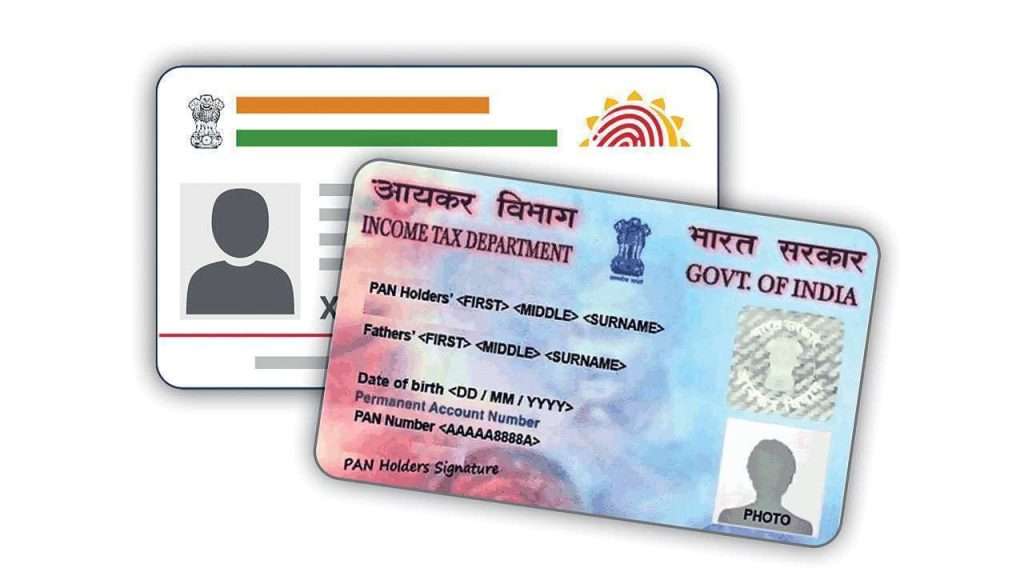Green Growth – The New India 2023

Theme: Green growth is one of the seven top priorities of the Union Budget 2023-24 for ushering green industrial and economic transition, environmentally friendly agriculture and sustainable energy in the country. It will also generate a large number of green jobs. The seven “Saptarishi” priorities-inclusive development, reaching the last mile, infrastructure and investment, potential, youth power, the financial sector, and green growth, are the major themes of the Union Budget, 2023. In the budget speech, the Finance Minister emphasized the words “green” and “sustainable” numerous times. She suggested that during Amrit Kaal, green growth might be revolutionary. The fundamental objective of green growth strategies is to make sure that natural resources can sustainably fulfil their maximum economic potential. What is Green Growth? In essence, ‘Green Growth’ refers to an economic growth plan that places a significant emphasis on sustainable development while minimizing harmful environmental effects. Out of 180 countries, India was placed 169th in the Environment Performance Index of 2022. Rankings were determined by factors like waste management, air quality, biodiversity & habitat, fisheries, ecosystem services, and climate change. India is the fifth-largest economy in the world, although it performed worse than many other smaller economies on the ranking. India’s Initiative to Promote Green Growth: The vision for “LiFE,” or Lifestyle for Environment, set forward by the prime minister aims to inspire a trend towards living sustainably. To lead the world into a green industrial and economic transition, India is vigorously pursuing the “panchamrit” and net-zero carbon emissions by 2070. Additionally, India is putting into practice numerous policies and programmes for the effective use of energy across various economic sectors, including green buildings, green equipment, green farming, green mobility, and green fuels. Large-scale green job opportunities are facilitated by these green growth initiatives, which also contribute to diminishing the economy’s carbon intensity. Green growth policies are an integral part of the structural reforms needed to foster strong, more sustainable, and inclusive growth. They help in several aspects of growth- Enhancing productivity by creating incentives for greater efficiency in the use of natural resources, reducing waste and energy consumption, unlocking opportunities for innovation and value creation, and allocating resources to the highest value use. Boosting investor confidence through greater predictability in how governments deal with major environmental issues. Opening up new markets by stimulating demand for green goods, services, and technologies. Contributing to fiscal consolidation by mobilizing revenues through green taxes and the elimination of environmentally harmful subsidies. These measures can also help to generate or free up resources for anti-poverty programs in such areas as water supply and sanitation, or other pro-poor investments. Reducing risks of negative shocks to growth due to resource bottlenecks, as well as damaging and potentially irreversible environmental impacts. India’s Green Growth Strategy Green growth, from green credits to green energy to green mobility to green farming, was among the seven main priorities that the latest budget announced. Indian green growth and energy transmission are outlined on three pillars: Increasing the production of renewable energy Reducing the use of fossil fuel in the economy Rapidly moving towards a gas-based economy in the country Measures like ethanol blending, PM KUSUM Yojana, incentives for solar manufacturing, rooftop solar scheme, coal gasification, and battery storage in the Budgets of the past few years underlined the strategy. Government Initiatives for Green Growth Some of the other major initiatives driving India’s green growth are: PM KUSUM PM-KUSUM (Pradhan Mantri Kisan Urja Suraksha evam Utthaan Mahabhiyan) Scheme is aimed at ensuring energy security for farmers in India. It is honouring India’s commitment to increase the share of installed capacity of electric power from non-fossil-fuel sources to 40% by 2030 as part of Intended Nationally Determined Contributions (INDCs). The scheme was launched in 2019 with 3 components: Component-A: For Setting up 10,000 MW of Decentralized Grid Connected Renewable Energy Power Plants on barren land. Component-B: For Installation of 17.50 Lakh stand-alone solar agriculture pumps. Component-C: For Solarisation of 10 Lakh Grid Connected Agriculture Pumps. Gobardhan Yojana India has the potential of producing 10 thousand million cubic meters of biogas from Gobar (cow dung) and 1.5 lakhs cubic meters of gas which can contribute up to 8% to the city gas distribution in the country. Gobardhan Yojana launched in 2018, is an important component of India’s biofuel strategy. In this budget, the government has announced plans to set up 500 new waste-to-wealth plants under the Gobardhan Yojana. The Galvanizing Organic Bio-Agro Resources Dhan (GOBAR-DHAN) scheme is implemented under the Swachh Bharat Mission Gramin-Phase 2, by the Department of Drinking Water and Sanitation under the Jal Shakti ministry. Conclusion India has huge potential to lead the world when it comes to technology for Green Energy and it can forward, the cause of global good apart from generating Green Jobs. The budget 2023-24 also identifies 100 projects to improve last-mile connectivity for industries like coal and ports, as well as activities that would not be considered green growth.
The new benefits in linking of Aadhaar and Pan Card 2023

Theme: Linking Aadhaar and PAN cards in India is a good sized step closer to transparency, fraud prevention, and streamlined monetary methods, leveraging unique identity numbers to establish and affirm individual identities. It strengthens governance, simplifies profits tax filing, reduces reproduction identities, and improves the targeted delivery of subsidies and benefits. The deadline to link PAN with Aadhaar is June 30, 2023. It was extended from the previous deadline of March 31, 2023, by the Central Board of Direct Taxes (CBDT) via a press release dated March 28, 2023. Benefits of linking Aadhar and PAN Card: Reduction in duplicate and fake identities: Over 1.38 billion Aadhaar numbers have been issued in India, covering a vast majority of the population. Linking Aadhaar and PAN helps in identifying and eliminating duplicate and fake identities, ensuring that each individual has a unique identification number. It enhances the integrity of the identification system and reduces the chances of fraudulent activities. Streamlined income tax filing: According to the Income Tax Department, over 315 million PAN cards were issued in India. Linking Aadhaar and PAN simplifies the income tax submitting system. It enables the automatic pre-filling of personal and financial information whilst filing tax returns, lowering mistakes and saving time for taxpayers. Pre-stuffed details consist of name, date of birth, and different applicable facts from Aadhaar. Elimination of multiple PAN cards: Prior to linking Aadhaar and PAN, people must possess a couple of PAN cards, which facilitated tax evasion and different fraudulent activities. Linking Aadhaar and PAN helps in figuring out instances wherein individuals have more than one PAN card and facilitate the removal of such duplicates. This step strengthens the tax system and ensures that individuals have the handiest PAN card associated with their Aadhaar. Enhanced accuracy in financial transactions: Linking Aadhaar and PAN aids in improving the accuracy of economic transactions. It permits higher tracking and reporting of monetary sports, lowering the chances of discrepancies or irregularities. This is specifically critical for high-amount transactions because it adds a further layer of verification and reduces the scope for illegal monetary transactions. Efficient verification process: Linking Aadhaar and PAN permits quicker and extra efficient verification of individuals throughout diverse transactions. It simplifies tactics inclusive of opening financial institution debts, making use of loans, or making high-value transactions. The linkage reduces the effort and time required for verification, making the method extra seamless and handy for individuals. Targeted delivery of government subsidies: The linkage between Aadhaar and PAN facilitates the government in correctly handing over subsidies, advantages, and social welfare schemes to eligible people. By validating the identification and earnings statistics through Aadhaar and PAN, the authorities can make sure that the benefits reach the intended beneficiaries, reducing leakages and improving the effectiveness of welfare programs. Enhanced financial inclusion: Linking Aadhaar and PAN promotes economic inclusion by permitting people without PAN cards to be part of the formal economic system It lets them get access to banking services, report taxes, and interact in transparent financial transactions. This inclusion is particularly crucial for individuals from marginalized sections of society, empowering them with vital financial tools and opportunities. Enhanced transparency in government transactions: The linkage of Aadhaar and PAN has enabled more transparency in government transactions. It enables the tracking of economic activities related to government schemes, subsidies, and prices. By cross-verifying the Aadhaar and PAN details, the government can ensure that the budget is accomplishing the meant beneficiaries and hit upon any irregularities. Why is it important to link? By linking Aadhaar and PAN, the Income tax department gains access to an audit trail of all transactions, making the Aadhaar card an essential document for all transactions. You will not be able to file an ITR unless your Aadhaar-PAN is linked. Once linked, ITR filing will be simplified because there will be no need to submit receipts or e-signature. The usage of an Aadhaar card has greatly reduced the requirement for other documents. Aadhaar card serves the purpose of identity proof and address proof. Transactions can be tracked after linking, which helps to prevent fraud and curb tax evasion. Conclusion Lastly, the Aadhaar-PAN linkage has contributed to improved governance and anti-corruption measures by means of improving transparency in government transactions and reducing ghost beneficiaries and leakages. Overall, the Aadhaar-PAN linkage has been a crucial step in the direction of constructing a more potent and more efficient monetary and identification machine in India.
